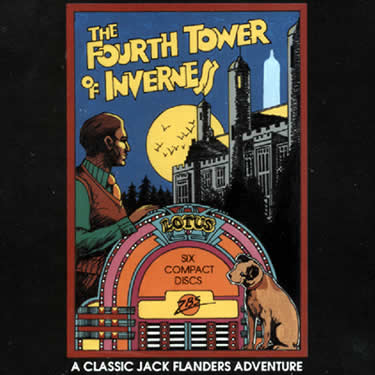For four decades, Thomas Lopez, also known as Meatball Fulton, has been president of The ZBS Foundation, a not-for-profit arts organization dedicated to the production of lush, adventurous, experimental modern radio fiction. ZBS' large catalog of productions includes many adventures from characters who have, over the years, become beloved: metaphysical adventurer Jack Flanders and Ruby the Galactic Gumshoe are the two best-known. Colin Marshall originally conducted this conversation on the public radio program and podcast The Marketplace of Ideas. [MP3] [iTunes link]
“Radio drama,” “audio theater,” “audio drama,” “radio theater” — which do you prefer?
I was at the European Radio Drama conference, and they decided to change the name to “audio drama,” because it exists on so many different platforms other than just radio. In America, they generally would call it “audio theater,” but it was interesting to hear the Europeans' take on it, that theater seems to have a connotation of… you know, theater, as opposed to drama, which is more general. I always liked “radio fiction,” frankly.
That's one I've not heard before.
I prefer that, simply because it distinguishes it. Public radio, particularly, has gone to — and I don't mean this is in a bad way — news and information, and fewer and fewer fictions. What they call “radio stories” are really documentaries. They call that storytelling, which is fair enough, but it's not the type of storytelling that I do.
 I do wonder why the bent has turned so strongly toward well-told nonfiction, when fiction could be told equally well in just about the same way on radio.
I do wonder why the bent has turned so strongly toward well-told nonfiction, when fiction could be told equally well in just about the same way on radio.
Definitely. That's why I did a series called Two-Minute Film Noir. The object was, I felt radio drama could exist with the documentaries — there was no reason not to. It was well-produced little noir type stories, self-contained, running about two to three minutes, and at the time, NPR's Day to Day, which was a midday magazine show, would play some of these right in with the documentaries and news that they were doing. It worked perfectly fine, as I thought it would, and then, of course, NPR discontinued Day to Day. At least I was proven right, that if a station will give it a chance, the short pieces can work very well with the existing documentaries.
At the beginning of this program, the audience heard a scrap of radio fiction themselves, a clip of a ZBS production called Dreams of the Amazon, starring what I'd call the “primary protagonist” of ZBS, Jack Flanders. That was actually the first ZBS thing I ever heard. I'm pretty sure my story is fairly typical for a ZBS listener. Back in '93, I was just a kid browsing the library looking for CDs, and I found this Dreams of the Amazon thing with very cool cover art. I picked it up on the basis of that alone, popped it in and it was like nothing I'd ever before. If it was some kind of audiobook I wouldn't have been surprised, but it was this full-cast production with this lush sound. Is that a fairly common was for people to find ZBS?
What's particularly amusing is the young kids — well, I call them kids — that have never heard radio drama, don't even know what it is, and pick it up thinking that it's an audiobook, meaning somebody reading a book, and then discover a full production and had never heard anything quite like it. Not that they're aren't other things out there; they just aren't exposed to it.
Read more »
Consider the classic hypothetical scenario: Your house is on fire and you can take only three things with you before the entire structure becomes engulfed in flames. What would you take? Laptops and external hard drives aside, people’s responses to this question differ wildly. This diversity results from people’s flexibility in ascribing unique value to objects ranging from a hand-scrawled note from a loved one to a threadbare t-shirt that others might consider worthless.

